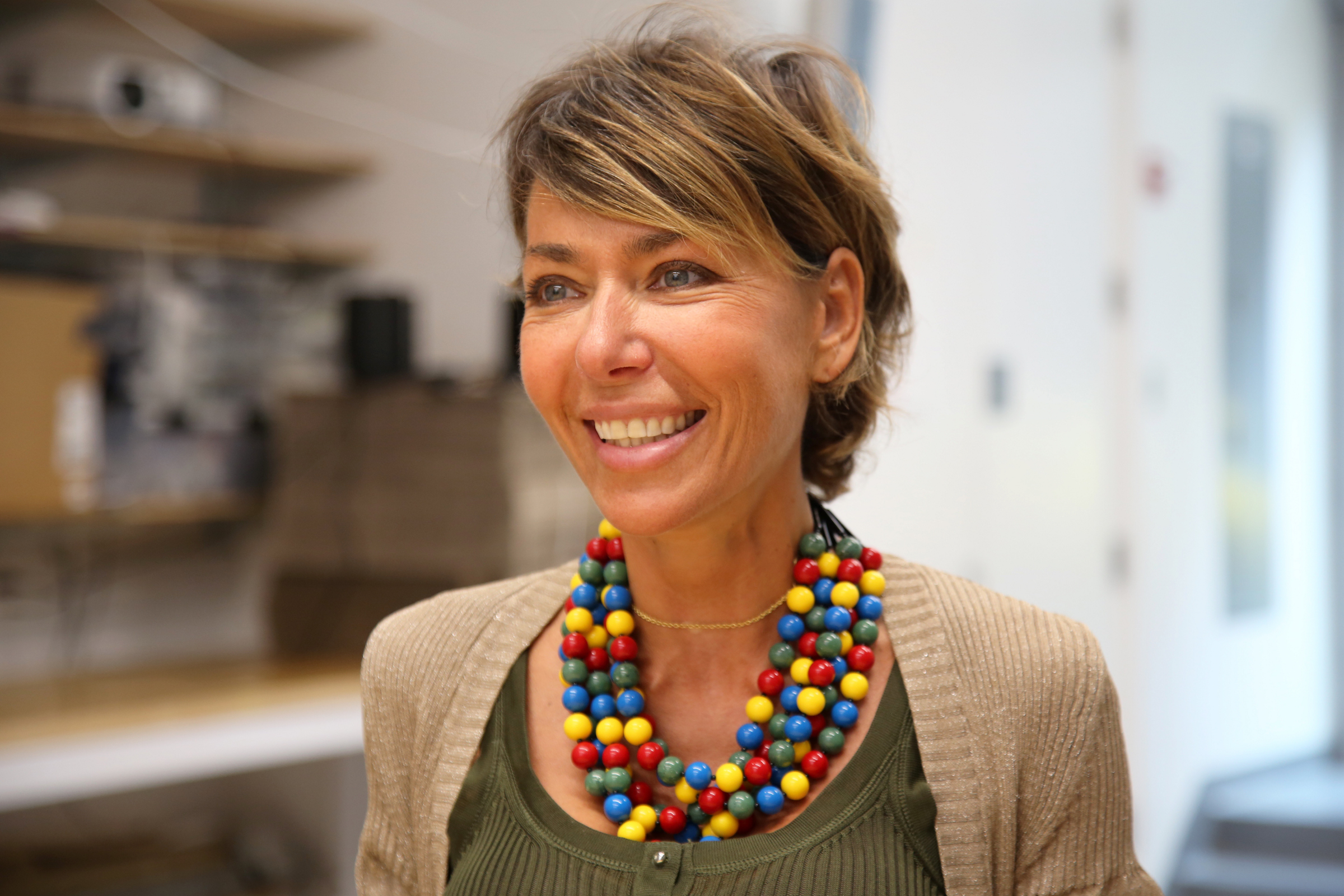On a recent Friday, jazz artist Oran Etkin spent a morning with preschoolers at the Lycée Français de New York. Vannina Boussouf, Assistant Head and Director of the Primary School, writes this journal entry on a fascinating (and beautiful!) learning moment.
Friday morning. Lycée Français de New York.
My day started only moments ago: arrival at school, greeting my colleagues, welcoming students at our 76th Street entrance. The heart of the Primary School is beating. All around is the pulsating presence and energy of the children. Very quickly, an hour goes by. It’s already 9:20!
Now I’m in the auditorium, along with our nine preschool classes. Oran Etkin, a jazz musician, is onstage, facing a demanding audience that will brook no compromise: 161 students between the ages of 3 and 5! And suddenly the magic: the jazzman begins to tell an enchanting story through “Clara Inette,” an instrument in human form. She talks to the children in richly interwoven musical words and phrases. And yet, everyone understands…Clara speaks to her assembled family: the bass, piano and drums. Powered by the energy of the the children’s clapping hands, she hops into a car and drives around the city to visit her friends, Dizzy Gillespie and Duke Ellington, in Harlem.
In French and in English, Oran invites the students to take part in the magic of the performance and to discover the language of Jazz, one as explicit as words.
The emotion in the room is palpable. The students are fully attentive, listening and learning. The clarinet comes to life, awakened by the breath of the artist. The children are fascinated and deep into the story told by this unusual musical figure, vibrant and alive before their joyful and delighted eyes.
The school now reveals itself as a place of wonder and learning. First, the children learn how to express an idea and tell a story, in French and in English. A narrative unfolds, using the vocabulary for taking a trip. Elements of enchantment give rise to a lesson on reality and fiction.
Next, they learn what makes a sentence: in verbal terms through the story of Clara but also in musical terms as her words transform into rhythms. Great jazz icons are saluted, Duke who lives in Harlem, and Dizzy teaching us bebop. And, of course, Jazz at large, the whole family of Jazz is eventually introduced.
Rhythms are created and learned through body shifts and coordination. Their gestures are fine-tuned, hands start clapping and fingers snapping. An extraordinary class in movement!
As Oran takes his bow, professional pride wells up in me in the presence of this great pedagogue and remarkable musician! Knowing that he will be our next artist in residence for third graders fills me with much joy and the excitement. We look forward to five days of master classes and the opportunity to learn fascinating music, and much Jazz, of course. What also awaits is a window into the creative process and collaborative work, which might even rouse some budding talents…
Art meets pedagogy. Pedagogy meets art, and I take a moment to reflect on what really matters in a student’s relationship to knowledge.
Educators occupy an essential place in a child’s life. For all adults in charge of students–parents, teachers, team leaders, let’s remember:
- Even the richest and most complex learning is accessible to very young children. The quality of their learning should be uncompromising, and the children respected. By reaching for higher educational endeavors, we can bolster their capacity to understand and learn and put them on the path to a healthy identity based on self-confidence. It is the adult’s responsibility, not the child’s, to ensure that such rich learning is within their grasp.
- As educators, we must share our passion and create an emotional connection in the classroom. There is no true learning without emotion. The chemistry of emotions imprints learning patterns in the brains of children (and adults!).
- There is no emotion without human connection. The connection is established when adult is trusted, and when the student feels truly seen and heard. An adult will, when truly present and demonstrating responsibility for the child’s well-being, establish a learning environment where children can predict the consequences of their actions. The attitude of adults towards children must be based on attentiveness, respect, an open mind, and constancy.
Learning within a warm, welcoming and caring environment, where all feel respected and included in an attitude of joy sustained by authentic learning of quality and value: this is the school’s very ambition, particularly among passionate educators endowed with a humanistic culture.
This drive is underscored by the excellence of our Cultural Center’s programming, the curation of the artists in residence, the selectivity of our recruitment and the importance attached to professional development.
About the Author :
Vannina Boussouf grew up on the Mediterranean island of Corsica, where bilingualism is an integral part of identity. She studied English and Spanish at the University of Corsica, and philology and letters in Cordoba, Spain, before starting a career as an elementary teacher and administrator. Vannina relocated to the United States in 2004, where she taught at the International School in Louisiana. She joined the Lycée in 2007 to direct the Primary School, and during her tenure, she has focused on innovative teaching methods that support the development of the whole child in a bilingual setting.


